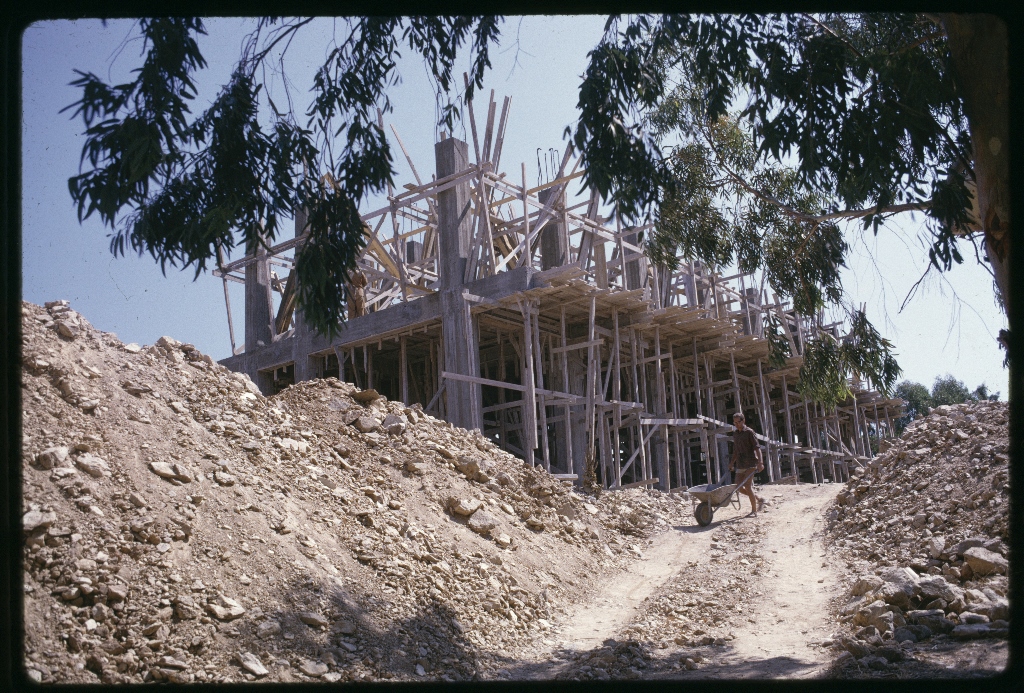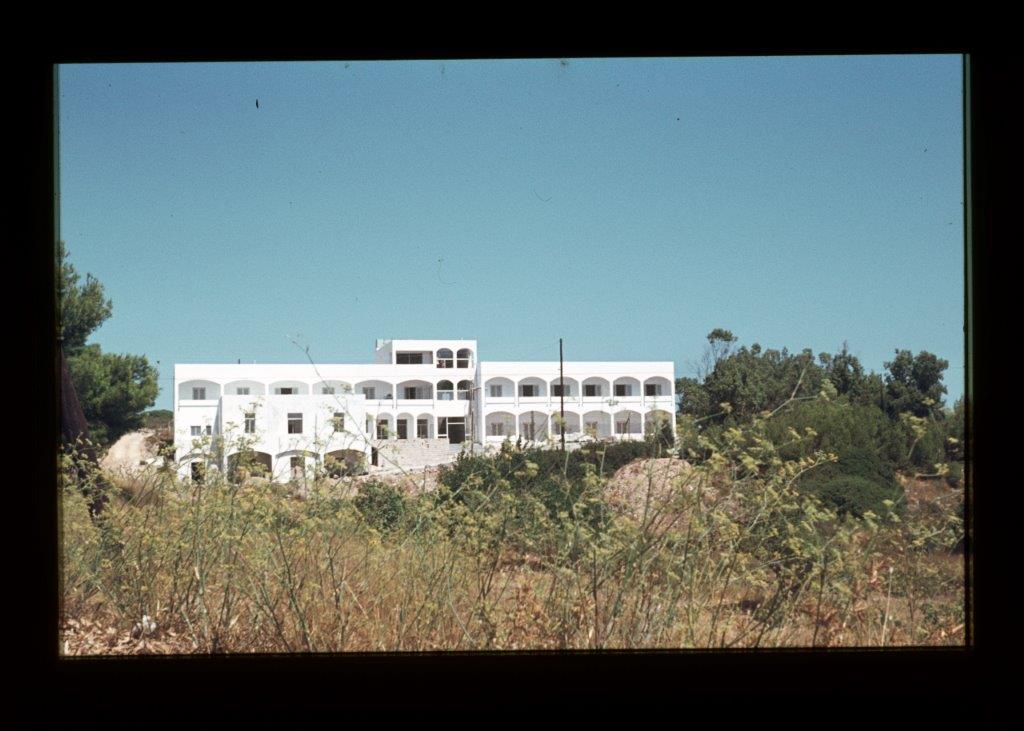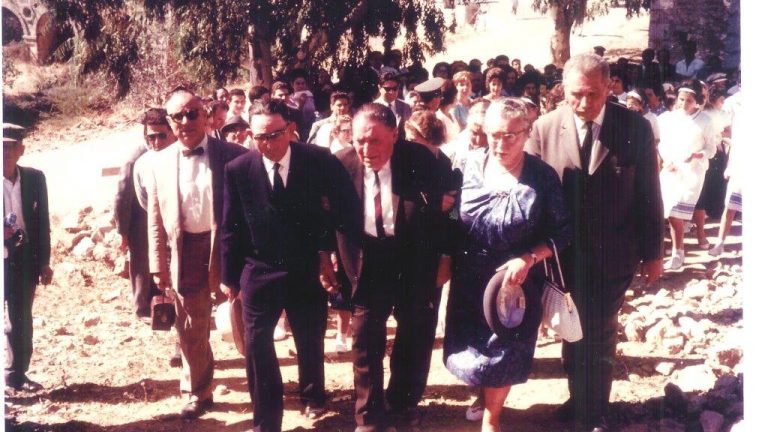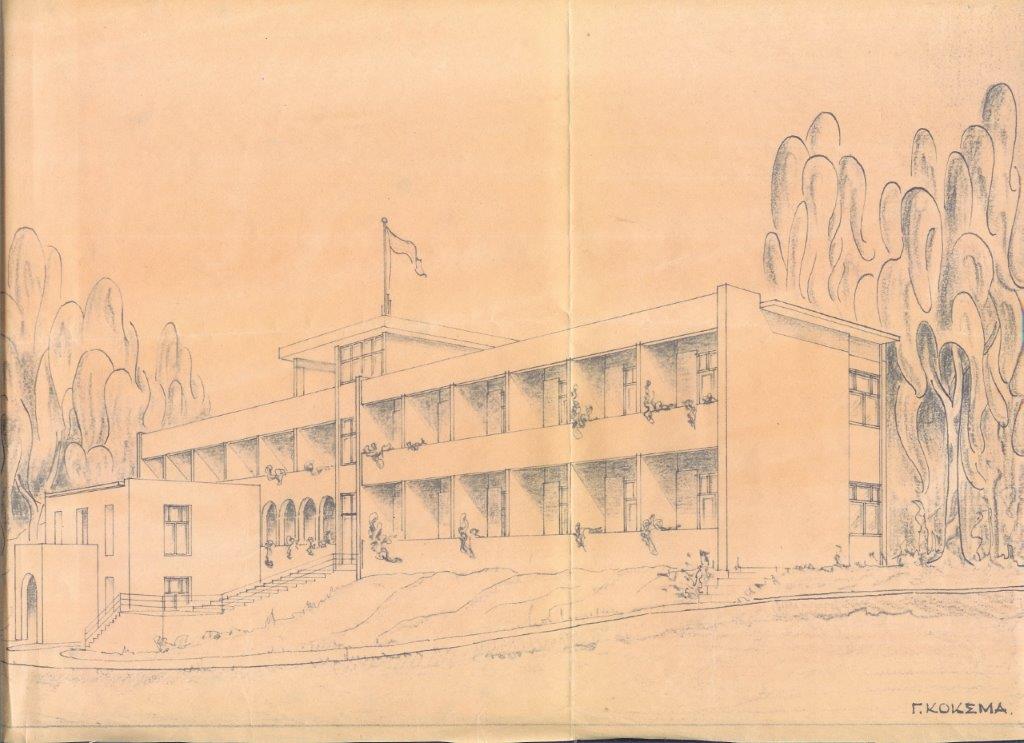
WCC Team-Kythera, 1960 – 1971.
The old people’s home in Potamos
(Article by Jean Bingen, August 2013)
The World Council of Churches, on a request of Bishop Meletios in 1956, sent a team to Kythira to help the Bishop to improve living conditions in his diocese. In The Netherlands the WCC found the Dutch couple George and Anna Koksma available to go and live for at least 10 to 15 years on the island. By the end of April 1960, they both arrived at Kythera and together with the Bishop they set up an extensive 10-point activity program to develop the island.
Activity 10: technical assistance
In October 1961 George heard about the generous gift of Mr. G. Casimaty (Kασιμάτη anglicised!) from Hobart, Tasmania, for an old people’s home to be built as soon as possible in Potamos close to its centre. For this Mr. G. Casimaty wants to donate a property with a stone building next to the bridge to Agia Pelagia and a building in Athens that could be sold.

But there is one condition: the old people’s home is to be managed by the hospital, which is quite close located from the proposed building site. Bishop Meletios however, being the president of the board of directors of the hospital, does not agree with the idea for an old people’s home at Potamos as he had already planned to develop Agios Theodoros, on the road to Aroniadika well outside Potamos, for a same purpose.
Hereupon George, trying not to touch anyone’s ‘filótimo’, early December 1961 advises Mr. Stratis Tzannes from Australia, who is the contact person with Mr. Casimaty in Tasmania and lives temporarily in Livadi: “because the hospital is property of the State and their architects and engineers must do the design for the old people’s home, which might take years, you should not yet offer this project to the hospital. Therefore, install a committee which will for now accept the property and after the whole project is finished will offer it to the hospital”. In this respect Mr. Casimaty was informed by Mr. Tzannes.
But then in February 1962 the Bishop wants the old people’s home to be built in Chora! For this he went to see all kinds of officials in Athens, but the general idea was that he had not been successful.
In a letter dated 8 March 1962 Mr. G. Casimaty writes to George: “I will write immediately to the Hospital Board and cancel my offer to them on account of not receiving a reply from them, and will advise them that a Special Committee will be appointed to deal with the matter.”
In a further letter dated 12 August 1962 he informs George of the following: “During my recent visit to Sydney I was invited by His Grace Archbishop Izekiel. His Grace informed me that he had received a letter from Bishop Meletios, asking him to assist in forming a Committee in NSW and Queensland for the purpose of collecting subscriptions for erecting an Old Men’s Home in Chora. We then explained to him that a move was already on hand for erecting a similar home at Potamos alongside the present hospital and we also explained to him that the reason for proposing to erect the Old Men’s Home next to the Hospital was so that the same Kitchen, Laundry and practically the same Staff will serve for both purposes and Doctors and Nurses could attend to the Old People as well as the sick. My father also donated a house in Ambelikopous, Athens, for this to be sold and with this to proceed to erect the Old Men’s Home in Potamos.” Also, he informed George that there will be 2 Committees, one in Athens to sell the house at a good price and one at Kythira to take care for the Old People’s Home at Potamos.
Several conceptual plans were developed by George’s Team; a more or less first definite proposal was ready in summer 1964. This had to be adapted to suit site conditions early 1965, but by the end of the same year a definite architectural plan is agreed upon.
70-Year-old Mr. Gregory Casimaty from Tasmania arrived at Kythera in June 1965. At the Team’s office in Chora he is shown the latest developments according to the information of the Ministry of Welfare. He will stay to lay the foundation stone! This important event happened 3 October 1965. At least 10 pappades were present, but where was the Bishop?

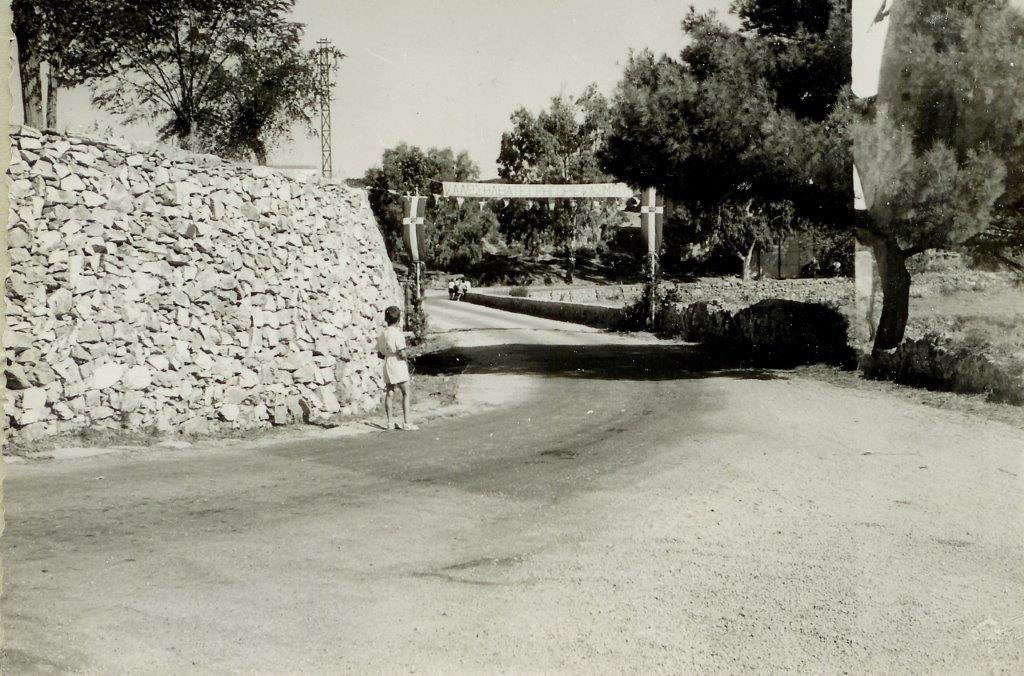
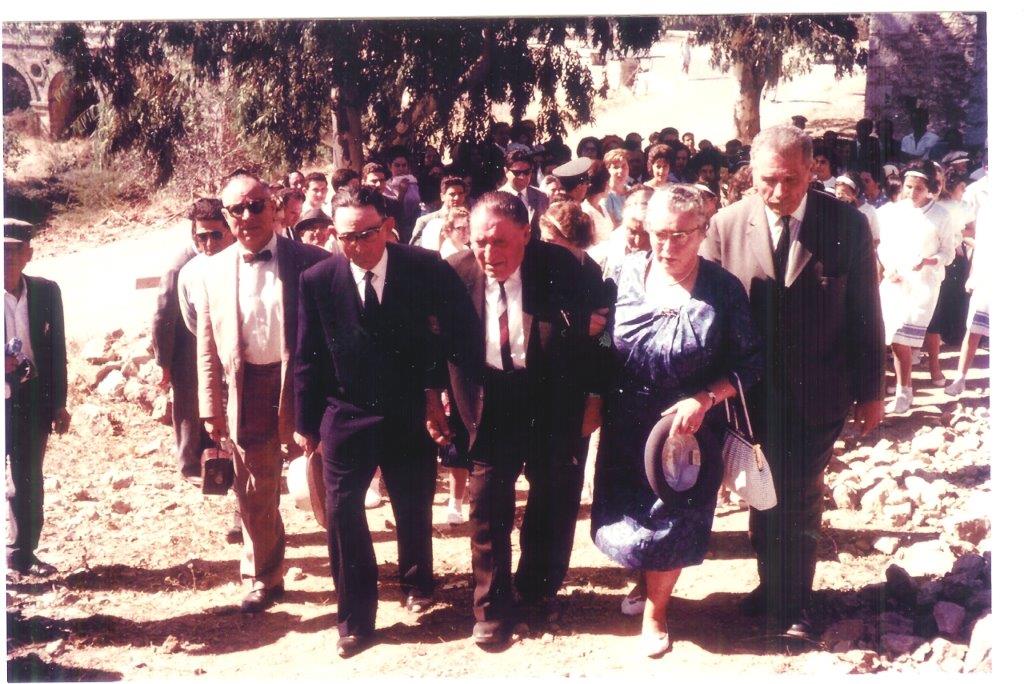
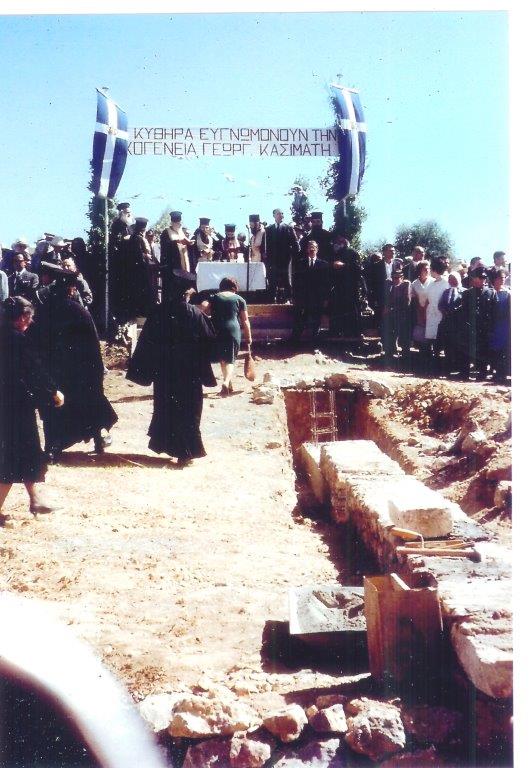
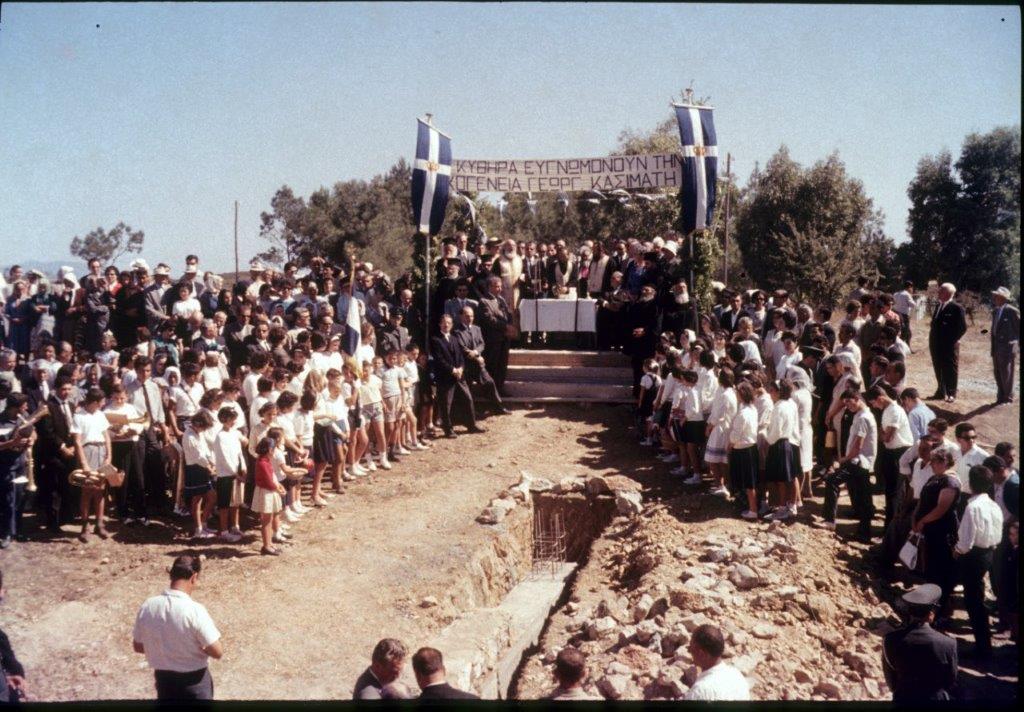
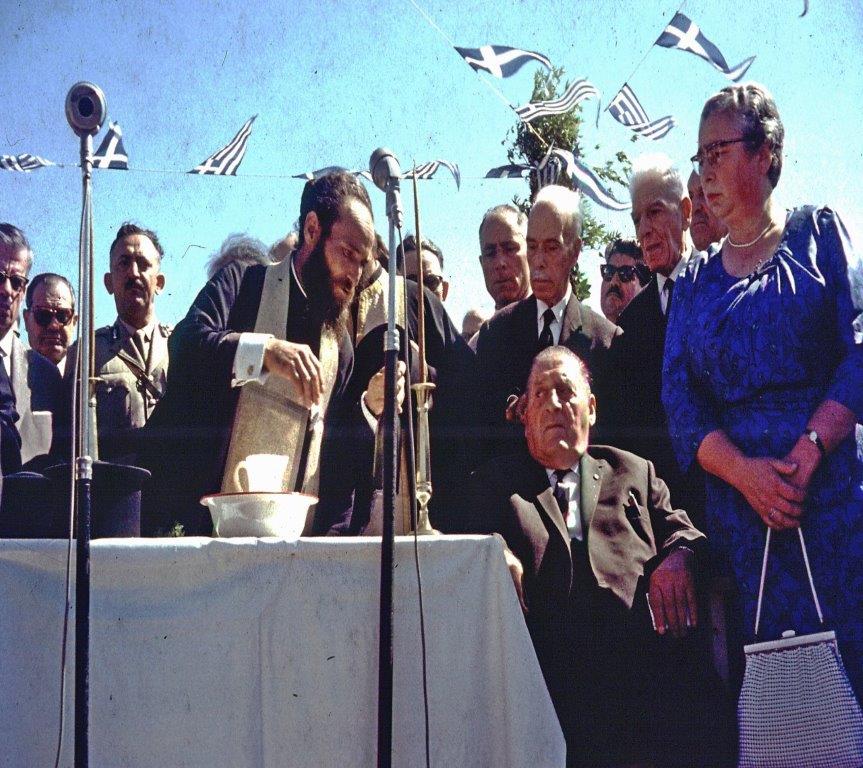

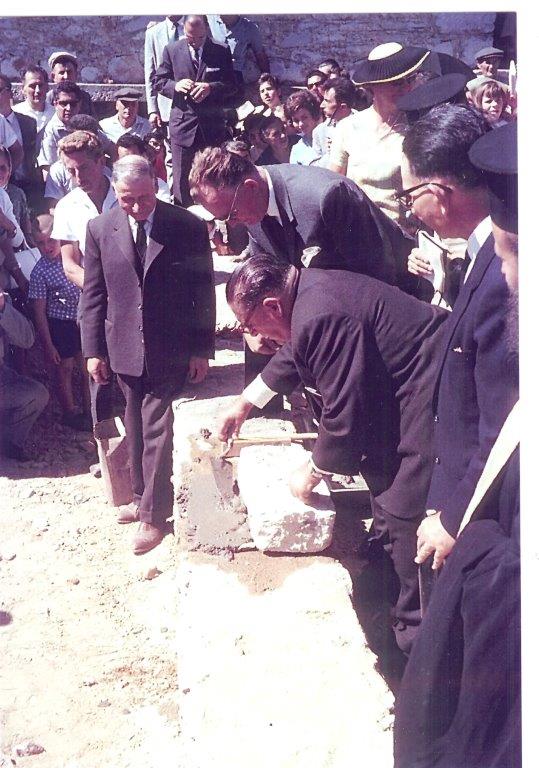
The Team now continued with the concrete strength design for floors, rafters and columns. This design was handed March 1966 to Mr. Ioannis Prineas, civil engineer in Athens. He eventually reworks this strength design to all required Greek codes and regulations and obtains the last signature of the Ministry of Public Work in December 1966. Now the construction can start. And indeed Mr. Karamitzas, civil contractor from Athens, is going to do the job for 4 million drachmas and starts in May 1967.
In the beginning all seems to go well, although the construction drawings from Athens are not exactly to the standard and quality as the Team had expected. The contractor is neglecting too much the required quality of such important concrete work. In September concrete work for the first floor was finished and in October followed the roof. In November 1967 bricklaying started. By the end of this year the Dutch civil engineer, who was supervising the construction for the Team, left the Team and Kythera. George now must do all alone the supervising of all the many other ongoing Team constructions and to provide a lot of people with sketches and construction plans for a variety of new projects. Then in January 1968 from Athens a change of architectural design is tried to be imposed without foreknowledge of the Team. With a lot of heated talk into the coming months the original plans were still adhered to. In May 1968 after the completion of the electrical installation, plastering of the interior was done and in July the complete building was finished.
The Old People’s Home, named “KASIMATEION” eventually was officially opened on 17 August 1975.
But what happened with Bishop’s Meletios plans for a boarding-house annex (nursery) home for elderly in Chora which also was supported by the Greek WCC office in Athens?
June 1968 George has all the plans ready for the renovation for this by Bishop Meletios allocated existing building and estimates the project to cost 2 million drachms, the larger part to come from Greece. He then writes for extra financial help to the “Dutch circle of friends of Kythera” (=Kythera Vriendenkring Nederland, 1967 – 1971). In their periodical ‘IRIS’ they immediately start an action in August under the name ”a home for Kula”. Already in April 1969 donations mount to 70.000 drachmas of which one of 50.000 drachmas from a similar Dutch home for elderly people in Rotterdam! Eventually by 1971 there was a fund available of approx. 140.000 drachmas for this home for elderly in Chora, but the plan was never executed (Bishop Meletios left his diocese by May 1969) and the money was transferred to the old people’s home in Potamos by the end of 1971.
Note: during the exhibition of the Koksma’s work in July 2014 at Chora I met Mrs. Matina Mottee-Casimaty, the daughter of Mr. Gregory Casimaty who laid the first stone for the old people’s home. She told me that also her uncle, a brother of her father, at that time had donated a property adjacent to her father’s at Potamos. Mrs. Mottee also mentioned that a couple of years ago the Casimaty family had donated property below the old people’s home to allow for the relief road for and adjacent to the old English stone arch bridge.
**Another interesting historical website is The Trifylleion Foundation of Kytherians
